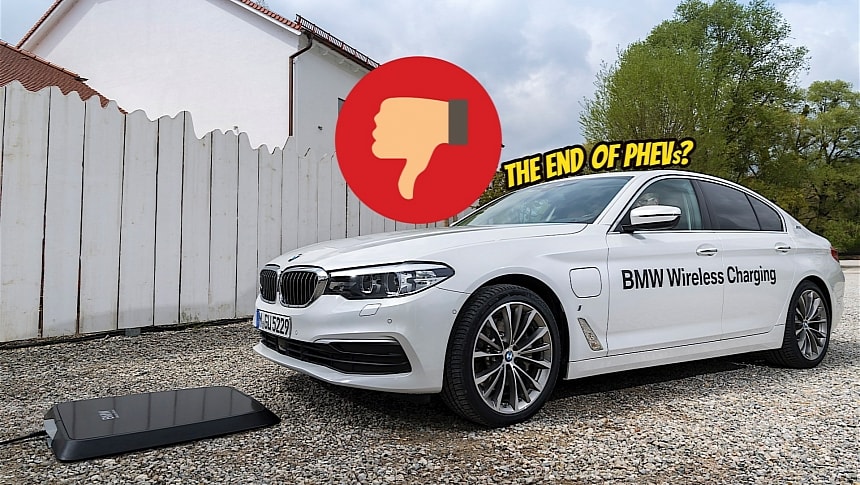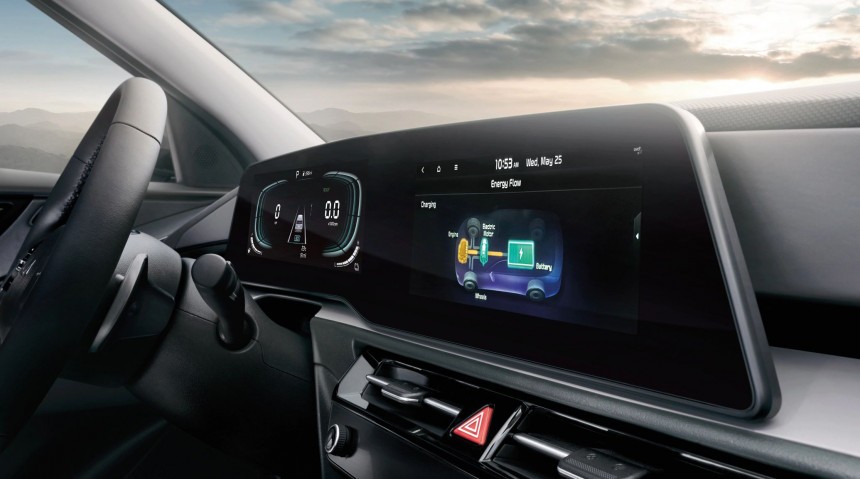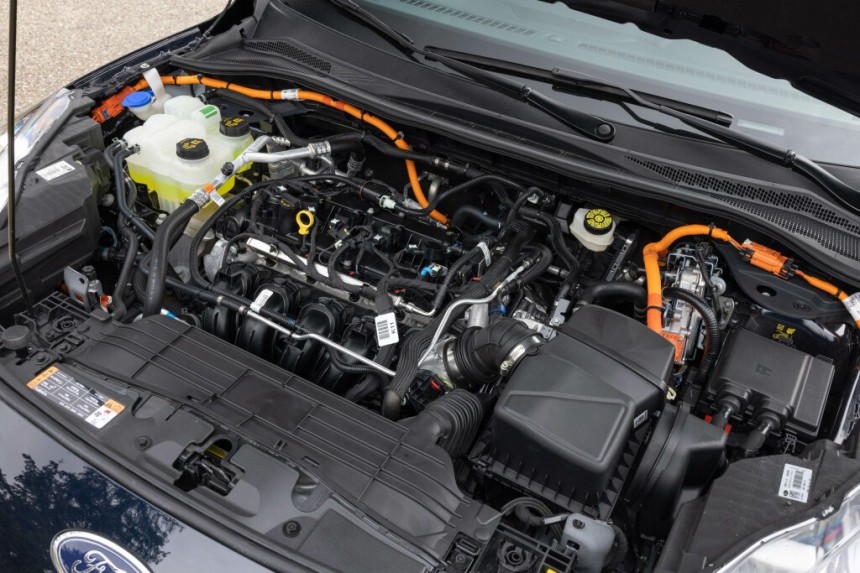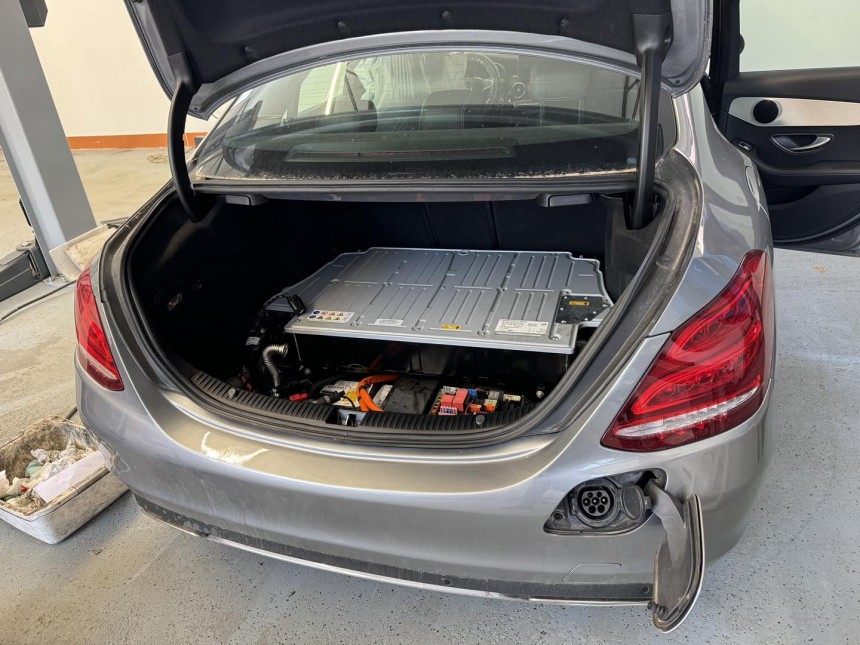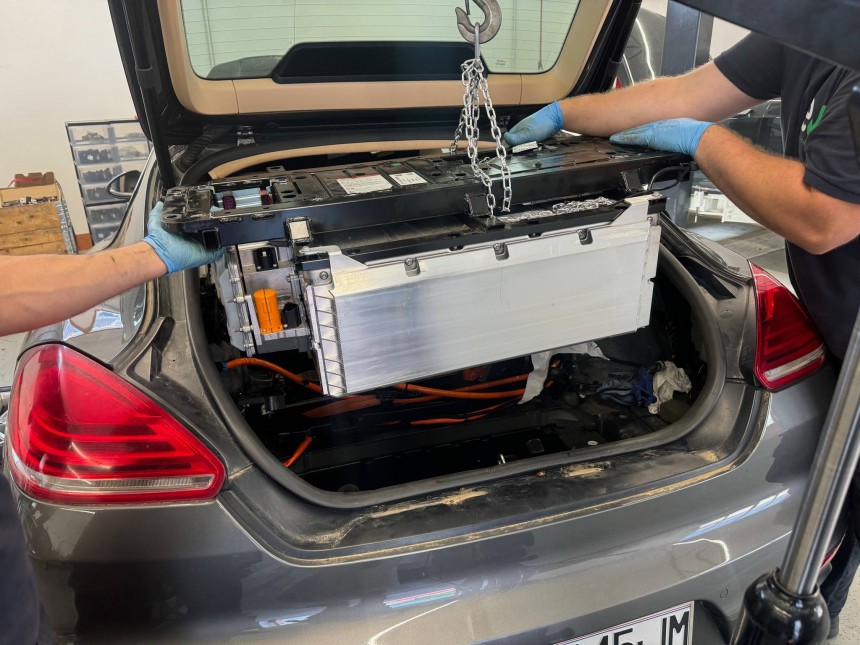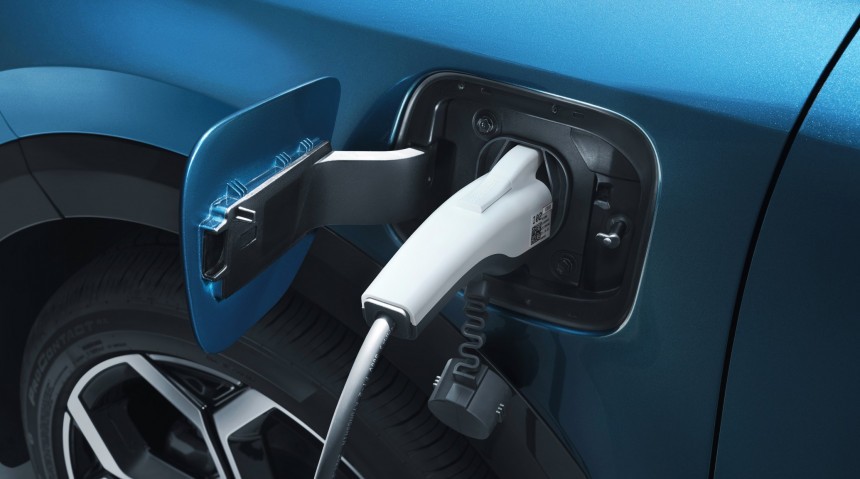Plug-in hybrid vehicles (PHEVs) can be the best or the worst of both worlds. That's what people have been saying since the Chevy Volt made a splash in 2010. You have an internal combustion engine, a gas tank, (at least) one motor, and a modestly-sized high-voltage battery, and they all work together to optimize fuel efficiency and give the driver enough power to pass other vehicles with confidence. Sadly, it's not all rosy.
I have been adamant for quite some time now that PHEVs are a halfway point to EV ownership. Some people aren't willing to learn everything there is to know about driving and living with a battery-powered car, and that's a-ok. Not anyone has to learn how to deal with apps, plan longer journeys in advance, and trust that the charging infrastructure won't fail them.
Moreover, many still think that these zero-tailpipe emission rides are very expensive, even though a $39,000 rear-wheel-drive Model 3 or a $40,000 (with the federal EV tax credit applied) all-wheel-drive Model 3 can be great commuting appliances, as long as the state you live in isn't forcing you to pay a ton for registration or the insurers aren't forcing you to go back to a conventional ride because of insane premiums.
So, until more Americans realize that buying an all-electric vehicle could be the ideal solution for their mobility needs because they can charge it cheaply at home overnight or for free at work and there would be little maintenance needed, plug-in hybrids are the ideal choice for anyone wishing to experience the zero-tailpipe emission lifestyle with none of the EV-specific drawbacks.
Forgot to plug the car in when you got home? No worries – there's a gas tank and an internal combustion engine that can put in the work. Most PHEVs can also use the mechanical beating heart as a generator. It'll charge the high-voltage energy storage unit while you're coasting, which enables the car to go emission-free within city limits.
But it can get a lot better than that. It can also get a bit worse.
When you don't want to treat the xDrive50e like an M60i, the motor and the battery can turn your posh SUV into an e-ride that can cover up to 40 miles (64 kilometers) on a single charge. Fret not; it can accelerate to 84 mph (135 kph) while in all-electric mode. You can drive at highway speeds or pass someone without relying on the gas-powered engine. Just make sure you aren't demanding a lot of power from it because it will awaken the six-cylinder to pitch in.
A PHEV can be a gearhead's best friend because it allows the internal combustion engine to live on. It gives automakers the chance to lower their fleet emissions while only penalizing drivers with a bit of extra weight. The difference between the xDrive50e and the xDrive40i (same engine, no high-voltage battery and potent motor) is around 500 lb (227 kg). It's not bad at all. The plug-in hybrid model is 0.7 seconds faster to reach 60 mph from a standstill. Those 108 hp more are really helping.
The issue with PHEVs is that automakers can't (and should never attempt to) force customers to drive efficiently and keep charging the battery at home, at work, or while shopping. Using the powerplant that's under the hood to charge the battery consumes more fuel. Keeping it at a low state of charge is also not good because it'll rarely be put to good use. That means the ride's green potential is wasted. Furthermore, the engine is put through accelerated wear and tear because it has to haul more weight than when found on a non-electrified model.
So, people who buy PHEVs to access incentives and use them like they are just faster than mild hybrids or pure ICE-powered rides are not helping. Au contraire, they're just making things worse for themselves and for the environment. They'll pay more for maintenance and gas, while also putting more nasty stuff into the air.
And that's exactly where my world was rocked. Although PHEVs are great for urban dwellers who want a car that'll do it all, they can turn into major headaches once the small high-voltage battery has been put through its paces and is no longer a worry for the manufacturer.
The problem with these energy storage units is that they are very often put through discharge cycles that stress the cells, which means they degrade faster. That translates into less all-electric range and, at some point, no zero-tailpipe emission go capacity.
Some EV owners know that replacing the high-voltage battery can cost an arm and a leg, but those are usually three or four times larger than what's put in a PHEV. Since we mentioned it earlier, let's take the Tesla Model 3 as an example. Replacing the energy storage unit out of pocket can cost between $17,000 and $21,000, with labor included. If you're lucky enough and only one module needs replacing, then the cost can drop to $5,000 or lower.
Do keep in mind that no battery is immune to degradation. Most have a limited lifetime. Your iPhone 15, for example, is guaranteed to retain at least 80 percent of its total capacity after 1,000 "complete charge cycles under ideal conditions."
A Zagreb, Croatia-based EV repair shop has been repairing plug-in hybrids for quite some time, and the owners are so passionate about it that they didn't even refrain from scolding certain brands for not doing a good job. They put Mercedes-Benz on the spot and suggested to the Stuttgart-based marque to look at what Tesla or BMW are doing to learn a thing or two. "We have an invasion of Mercedes EVs and hybrids, and we can't repair them all," said the EV Clinic on its Facebook page.
But that's not the worst thing the technicians have discovered since they shifted from conventional cars to electrified units. Lately, plug-in hybrid owners from various European countries have sent their vehicles to the EV Clinic because nobody else has managed to figure out what is wrong with them or has handed the owners absurd quotes.
Unfortunately for some, the EV Clinic wasn't able to come up with a favorable solution. A 2014 Porsche Panamera E-Hybrid owner had to face the cold truth: the 9.4-kWh Bosch battery was toast. Replacing it would have cost €18,400 ($19,747) sans labor. That's eerily close to the vehicle's price on the secondary market. We found several Panamera E-Hybrids online available for well under $25,000.
The worst thing, however, is that the shop wasn't able to find a replacement. Apparently, the batteries aren't being made anymore.
The company is working closely with suppliers to find a solution, but they haven't stumbled upon anything yet.
Next, a 2018 BMW 5 Series (530e) has used its 9-kWh pack so much that after only 93,206 miles (150,000 kilometers), it stopped working. Replacing the battery would have cost around €11,000 ($11,798). Fortunately, the owner accepted the estimate and saved the sedan.
The technicians claim that such small batteries aren't good enough. They can't support such hefty powertrains and degrade around four times faster than the large packs found in full-on EVs. The company also claims that plug-in hybrids are ruining the reputation of EVs because of such failures. Many PHEV owners who visited the EV Clinic said they don't intend to make the jump to an EV. Au contraire, they believe that a simple gas- or diesel-powered car might be their next ride.
One can only imagine how Lamborghini Revuelto's 3.8-kWh battery will face the test of time. It has to charge and discharge rapidly, which doesn't sound good at all.
At the end of the day, the shop's recommendation is as follows: If you must buy a hybrid, do so. But stop driving it before the warranty expiration date or mileage limit is reached. Then, sell it to your enemy before the service agreement ends. That's quite a statement, but it's hard to disagree with the technicians. PHEVs may be good for fleets in some parts of the world, but if you're an individual customer, you should consider leasing or buying one outright with a clear sale date in mind.
Moreover, many still think that these zero-tailpipe emission rides are very expensive, even though a $39,000 rear-wheel-drive Model 3 or a $40,000 (with the federal EV tax credit applied) all-wheel-drive Model 3 can be great commuting appliances, as long as the state you live in isn't forcing you to pay a ton for registration or the insurers aren't forcing you to go back to a conventional ride because of insane premiums.
So, until more Americans realize that buying an all-electric vehicle could be the ideal solution for their mobility needs because they can charge it cheaply at home overnight or for free at work and there would be little maintenance needed, plug-in hybrids are the ideal choice for anyone wishing to experience the zero-tailpipe emission lifestyle with none of the EV-specific drawbacks.
Forgot to plug the car in when you got home? No worries – there's a gas tank and an internal combustion engine that can put in the work. Most PHEVs can also use the mechanical beating heart as a generator. It'll charge the high-voltage energy storage unit while you're coasting, which enables the car to go emission-free within city limits.
A two-edged sword
Take the X5 xDrive50e as an example. It does have a starting price of $73,100, but it pairs that sweet and reliable B58 3.0-liter six-cylinder 308-hp engine with a 194-hp motor integrated into the eight-speed transmission. The Bavarians say that it has a maximum output of 483 hp and 516 lb-ft of torque. Put it on a dyno, and you'll quickly realize that BMW has been very conservative with its reporting. The drivetrain can play with around 510 hp and almost 543 lb-ft of torque when the 25.7-kWh battery has enough electricity in it.When you don't want to treat the xDrive50e like an M60i, the motor and the battery can turn your posh SUV into an e-ride that can cover up to 40 miles (64 kilometers) on a single charge. Fret not; it can accelerate to 84 mph (135 kph) while in all-electric mode. You can drive at highway speeds or pass someone without relying on the gas-powered engine. Just make sure you aren't demanding a lot of power from it because it will awaken the six-cylinder to pitch in.
A PHEV can be a gearhead's best friend because it allows the internal combustion engine to live on. It gives automakers the chance to lower their fleet emissions while only penalizing drivers with a bit of extra weight. The difference between the xDrive50e and the xDrive40i (same engine, no high-voltage battery and potent motor) is around 500 lb (227 kg). It's not bad at all. The plug-in hybrid model is 0.7 seconds faster to reach 60 mph from a standstill. Those 108 hp more are really helping.
The issue with PHEVs is that automakers can't (and should never attempt to) force customers to drive efficiently and keep charging the battery at home, at work, or while shopping. Using the powerplant that's under the hood to charge the battery consumes more fuel. Keeping it at a low state of charge is also not good because it'll rarely be put to good use. That means the ride's green potential is wasted. Furthermore, the engine is put through accelerated wear and tear because it has to haul more weight than when found on a non-electrified model.
Long-term woes
But there are more problems prospective customers should take into account. Typically, shops charge more to repair hybrids because their workers need better gear, more tools, and special training. On top of that, not all PHEVs can be fixed in any shop. Depending on where you live and what ride you have, the options could be limited. It's likely that you'll be dependent on an authorized dealership, and we all know what that means. Unless it's a warranty fix, it'll cost you a pretty penny to repair whatever went wrong.And that's exactly where my world was rocked. Although PHEVs are great for urban dwellers who want a car that'll do it all, they can turn into major headaches once the small high-voltage battery has been put through its paces and is no longer a worry for the manufacturer.
The problem with these energy storage units is that they are very often put through discharge cycles that stress the cells, which means they degrade faster. That translates into less all-electric range and, at some point, no zero-tailpipe emission go capacity.
Do keep in mind that no battery is immune to degradation. Most have a limited lifetime. Your iPhone 15, for example, is guaranteed to retain at least 80 percent of its total capacity after 1,000 "complete charge cycles under ideal conditions."
A Zagreb, Croatia-based EV repair shop has been repairing plug-in hybrids for quite some time, and the owners are so passionate about it that they didn't even refrain from scolding certain brands for not doing a good job. They put Mercedes-Benz on the spot and suggested to the Stuttgart-based marque to look at what Tesla or BMW are doing to learn a thing or two. "We have an invasion of Mercedes EVs and hybrids, and we can't repair them all," said the EV Clinic on its Facebook page.
But that's not the worst thing the technicians have discovered since they shifted from conventional cars to electrified units. Lately, plug-in hybrid owners from various European countries have sent their vehicles to the EV Clinic because nobody else has managed to figure out what is wrong with them or has handed the owners absurd quotes.
The worst thing, however, is that the shop wasn't able to find a replacement. Apparently, the batteries aren't being made anymore.
The company is working closely with suppliers to find a solution, but they haven't stumbled upon anything yet.
Some useful things to keep in mind
In another instance, a 2015 Land Rover Range Rover owner came to the shop to have their vehicle fixed. As you might expect, the energy storage unit was problematic. However, the extremely small 1.7-kWh high-voltage battery rendered the car useless because replacing it would cost €31,000 ($33,258). The SUV can't start without the system identifying a working high-voltage battery. And if you can bypass that initial check, the A/C system won't work.The technicians claim that such small batteries aren't good enough. They can't support such hefty powertrains and degrade around four times faster than the large packs found in full-on EVs. The company also claims that plug-in hybrids are ruining the reputation of EVs because of such failures. Many PHEV owners who visited the EV Clinic said they don't intend to make the jump to an EV. Au contraire, they believe that a simple gas- or diesel-powered car might be their next ride.
One can only imagine how Lamborghini Revuelto's 3.8-kWh battery will face the test of time. It has to charge and discharge rapidly, which doesn't sound good at all.
At the end of the day, the shop's recommendation is as follows: If you must buy a hybrid, do so. But stop driving it before the warranty expiration date or mileage limit is reached. Then, sell it to your enemy before the service agreement ends. That's quite a statement, but it's hard to disagree with the technicians. PHEVs may be good for fleets in some parts of the world, but if you're an individual customer, you should consider leasing or buying one outright with a clear sale date in mind.
